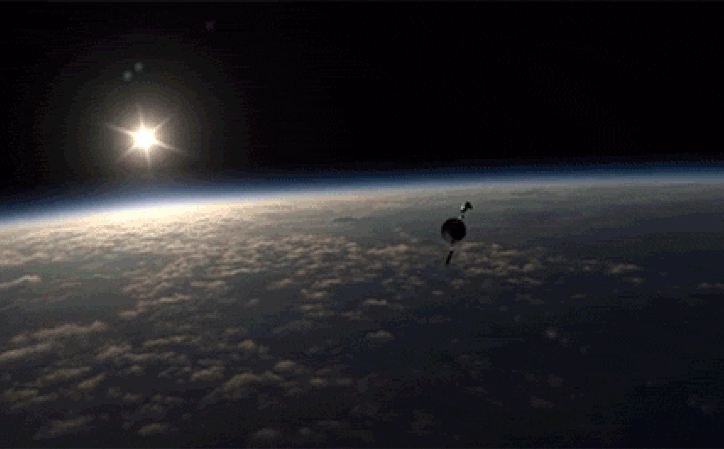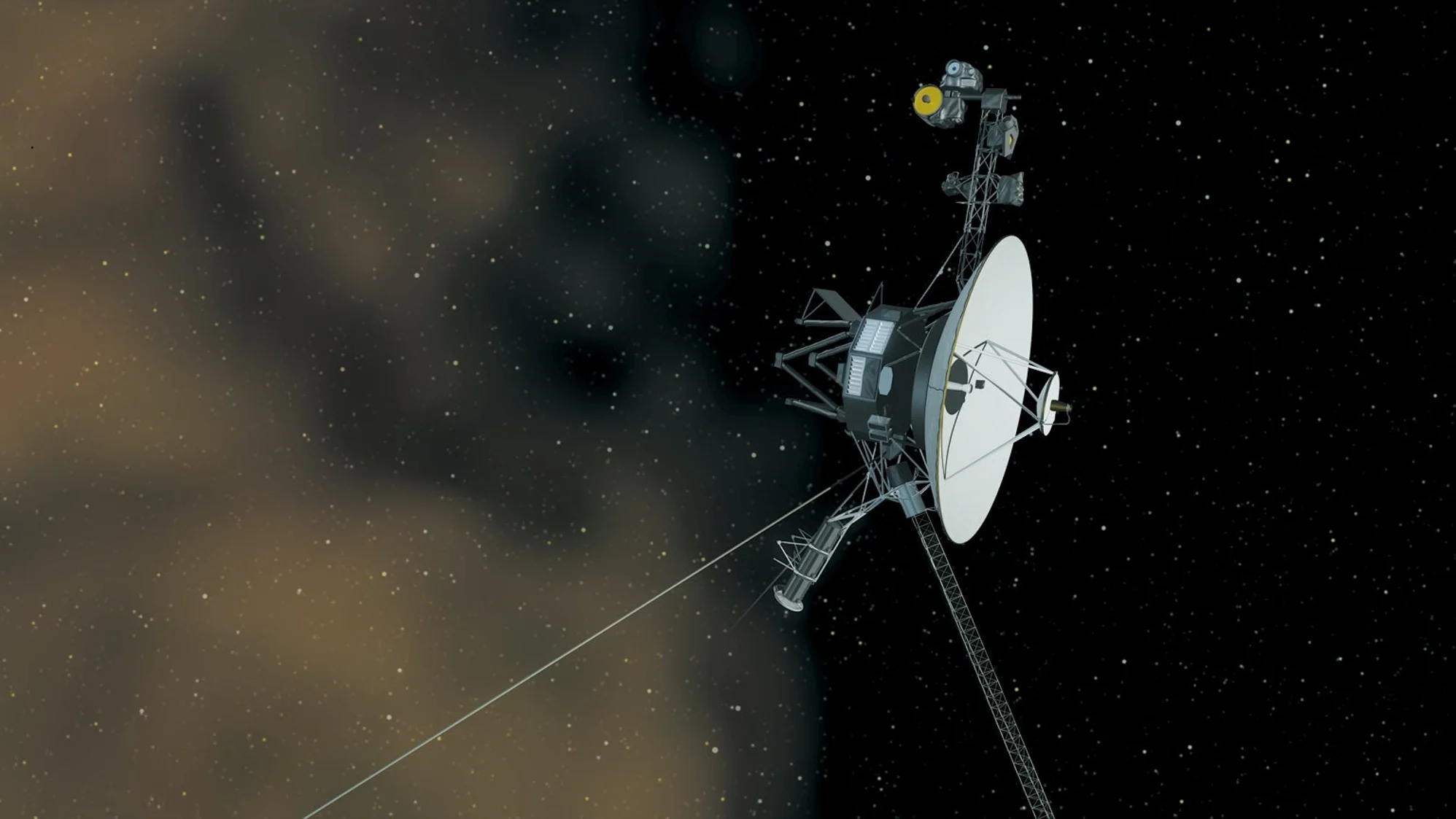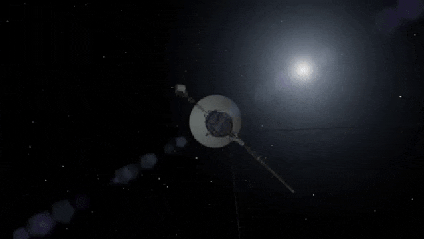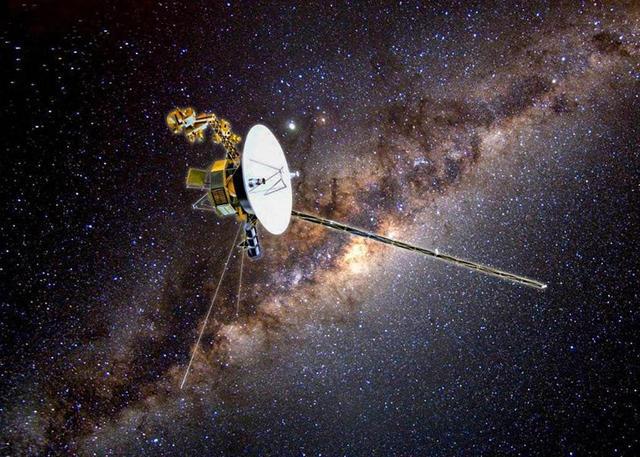Flying more than 20 billion km, why did the billion-dollar train not collide? Experts say: Not luck
- Tram Ho
The billion-dollar Voyager 1 spacecraft was developed by NASA in the 20th century, weighs 815 kg and was launched into space on September 5, 1977. Voyager 1’s original mission wasn’t interstellar space exploration, because experts didn’t expect its generator to last that long.

Accordingly, the primary purpose of Voyager 1 was to explore Jupiter and Saturn. In 2012, Voyager 1 became the first man-made object to reach interstellar space.
Voyager 1 and its “brother” Voyager 2 are both powered by plutonium, a radioactive element capable of generating nuclear energy through fission reactions. So, even though it was launched 45 years ago, the electronics on Voyager 1 are still working properly.
However, because the power of Voyager 1 is about to run out, in recent years, NASA has conducted decommissioning of many components on this spacecraft to ensure the ability to provide energy.

Voyager 1 is currently 23.5 billion kilometers from Earth. Photo: NASA
Currently, Voyager 1 is 23.5 billion km away from Earth and is still moving further, so even the smallest data from this ship is still of interest to scientists.
However, there is a problem that is of great interest to many people, why during 45 years of traveling in space, Voyager 1 has never had a serious accident? What did this billion-dollar ship encounter during its flight and why did it not hit an asteroid in space?
In fact, according to experts, Voyager 1 should have passed through two “accident-prone” areas. The first is the asteroid belt between Mars and Jupiter. The second is the Kuiper belt, which lies beyond the orbit of Neptune.
These two regions are relatively densely populated with asteroids, but Voyager 1 passed without any risk. What is the real cause?
Analysis of the underlying condition of the asteroid belt will help shed light on the cause. Specifically, the location of the asteroid belt is between Mars and Jupiter. In fact, 98.5% of asteroids discovered by humans are from here.
Except for Pallas, Vesta, Juno, and Ceres, which are larger in size, the remaining asteroids in this region are all very small, some of which are barely visible to the naked eye. Astronomers also estimate that the total mass of main-belt asteroids could be as little as 3% of the mass of the Moon.
According to experts, the reason why Voyager 1 was able to successfully pass through this area turned out to be unrelated to luck. Instead, the underlying cause is that the distribution of matter in the asteroid belt is very thin, and the sizes of most asteroids are very small .
We can often be fooled by the images shown in asteroid impact events or various science fiction movies, given that the asteroid belt is very narrow and crowded. But in reality, the asteroid belt is estimated to be a very large area.
Even if there are undiscovered asteroids, the situation in the asteroid belt will not be crowded. Therefore, Voyager 1 can fly through this area smoothly.
Similarly, can Voyager 1 pass through the Kuiper belt without a collision?
The asteroids in the Kuiper belt, although significantly larger in size, are still not close to each other. Furthermore, Voyager 1 does not cross the Kuiper belt. The reason is that this spacecraft has come too close to Saturn’s moon Titan, so its orbit is skewed.
Voyager 1 gets its first software update in 45 years
At the end of August 2022, a NASA representative said, after many months of errors and sending junk data to the control station on Earth, Voyager 1 has returned to normal operation. Voyager 1 received an important software update to patch data transmission junk, and this is also the first time this ship has received a software update in 45 years.

Voyager’s first software update in 45 years. Photo: NASA
Previously, in May 2022, NASA experts discovered that Voyager 1 had a problem somewhere in the AACS system (the system to keep the spacecraft’s antenna pointed towards the Earth). According to experts, although the rest of the spacecraft is still operating normally, the information sent back including the status and records of activities on board is meaningless.
To fix this problem, NASA engineers chose to send a command to Voyager 1 to have the ship’s AACS system use the correct other computer for communications back to Earth.
This is a low-risk but time-consuming repair solution. Specifically, because Voyager 1 is currently flying 23.5 billion kilometers away from Earth and continues to fly further, it takes NASA nearly 22 hours to transmit or receive data from this spacecraft.
However, after solving the data problem on the Voyager 1 probe, NASA continued to work on another mystery. What is it that caused the above problem?
Suzanne Dodd, Project Director of Voyager, said: “We’re delighted to have the telemetry data back again. We’ll also read the full AACS memory and look at everything it’s doing. This will help us find the cause of the problem.”

Voyager 1 is expected to continue moving and operating at least until 2025. Photo: NASA
NASA engineers suspect that Voyager 1 started experiencing data problems after it received a bad command from another computer on board. This may hint at another problem lurking in the Voyager 1’s computer brain. The Voyager mission team doesn’t see it as a threat to the long-term “health” of the humans. this ship.
However, experts still want to know exactly what is going on inside Voyager 1. Experts expect, at least until 2025, Voyager 1 will continue to carry out the mission of transmitting data. from interstellar space.
Articles refer to sources: NASA, Space
Source : Genk
